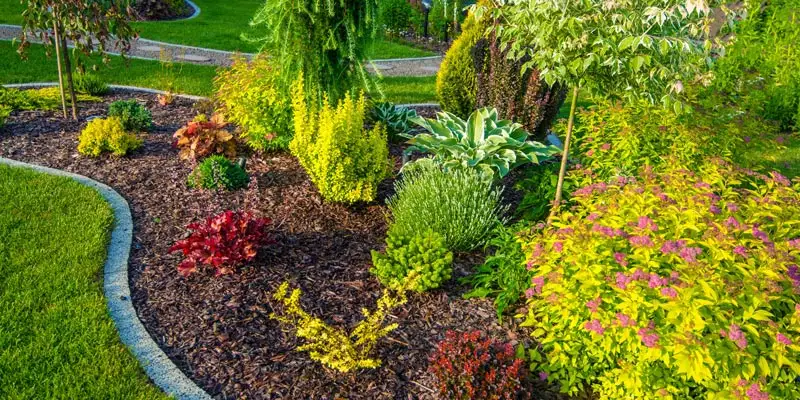Landscape Design Fundamentals Explained
Landscape Design Fundamentals Explained
Blog Article
The Basic Principles Of Landscape Design
Table of ContentsLandscape Design Fundamentals ExplainedThe Landscape Design StatementsThe Ultimate Guide To Landscape DesignThe Basic Principles Of Landscape Design More About Landscape Design
A lawn can typically be divided into three locations: public (the front backyard), exclusive (the back lawn), and service (typically the side lawn). The area of task locations depends mostly on the kind of location, the size of area needed, the kind of activity, and the preferred closeness to various other tasks and structures.The outdoors wall of your home often acts as the first wall surface or beginning factor of an outside area. Inappropriate uses need to be divided, and associated tasks, such as cooking and eating, should be assembled to make the backyard more efficient and enjoyable. When using hardscape to produce areas, utilize construction product comparable to that used in your house for connection from the residence into the yard.
Connected spaces. Credit Report: Gail Hansen, UF/IFAS Using similar hardscape attributes and repeating plants pulls the eye around the yard. Crucial factors in the process can be emphasized with plantings or functions that draw interest and motivate movement in a particular direction. Relocating along the path takes an individual from one area to the next and permits the user to have a range of experiences.
The Ultimate Guide To Landscape Design

For emotional convenience plants are utilized as physical or implied barriers for personal privacy and security. Physical obstacles obstruct both the sight and accessibility to a room and include fencings, walls and plant hedges. Indicated obstacles, typically reduced expanding plants, block accessibility but not the sight (Figure 9). Other functions of plants consist of cleansing the air, protecting against erosion and dirt loss, preserving moisture in the dirt, and returning raw material to the soil.
Physical and implied barriers. Debt: Gail Hansen, UF/IFAS For these reasons, the sorts of plants to be utilized (such as trees, bushes, or groundcovers) must be selected in the early phases of preparation (Landscape Design). Plant types are selected for their useful abilities to make sure that their future objective and called for room can be taken into consideration at the same time

The smart Trick of Landscape Design That Nobody is Discussing
Each plant mass is in front of, behind, or next to, one more mass. Credit: Gail Hansen, UF/IFAS Duplicating plants within a mass and duplicating masses with similar plants connects the garden with each other. The individual plant features must be considered to efficiently layer and mass plants.
All plant structures my company begin with the primary structure plants, the large, primarily evergreen history plants-such as the trees and huge shrubs. These plants different or enframe areas, control the dimension of the space, and supply the beginning point for selecting the suitable attributes of the second layer, midground plants, for massing and infill.
Crucial points in the garden ought to be highlighted by the use of one-of-a-kind plants, distinctive frameworks, or yard accessories. Noting limits or entryways to rooms can be finished with gateways, arbors, and actions, or through the use of distinct and vibrant plants. The form and/or style motif of the garden will often help identify the important points and how they ought to be highlighted.
Various other crucial locations in the lawn are focal points, which is used to visually arrange a designed area. The kind of centerpiece often depends on the watching viewpoint. Different perspectives or viewpoints can expose various compositions in the landscape that may need a range of centerpieces. Contrasting structure, form, dimension and color will capture and hold the eye.
What Does Landscape Design Do?

Plant types. Credit: Gail Hansen, UF/IFAS After kind, texture is the next dominant function of a plant; coarse, tool and great textures can be used blog here for contrast and emphasis in the landscape.
The pleasant fragrance of plants, the audio of wind in the trees, the sound and structure of water, and the shades and structures of sculptures, pots and garden furnishings all include to the experience of the garden. One information that is frequently overlooked is the result of light on the appearances of the plants.

Things about Landscape Design
It is very important to recognize the eventual fully grown size of plants so they can be positioned in the right location and spaced correctly when they are installed. Providing plants area to expand is a challenge due to the fact that the usual mature size is generally based upon ideal growing conditions and the ecological problems of a website may trigger a plant to enlarge or remain smaller sized.
Report this page